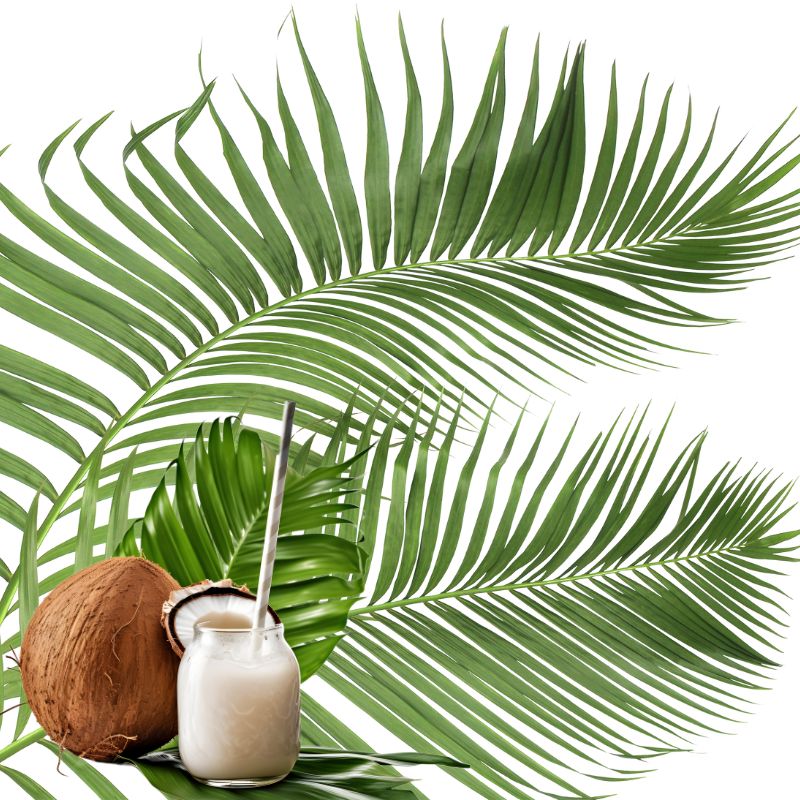
Understanding the Use of Ethylhexyl Palmitate
Share
What Conscious Consumers Should Know About This Common Skincare Ingredient
When looking for vegan, organic, and cruelty-free skincare, you might come across a number of ingredients that sound complex but play an important role in product performance. One such ingredient is often used for its smooth finish and moisturizing properties—ethylhexyl palmitate. You’ll find it in many well-known formulations, where it works quietly behind the scenes to enhance the sensory experience of your skincare routine.
Let’s break down what this ingredient does, where it comes from, and how it aligns with the values of ethical skincare enthusiasts like you.
What Is Ethylhexyl Palmitate?
This ingredient is a type of emollient, a substance that helps soften and condition the skin. Chemically, it's formed by combining 2-ethylhexanol (a type of alcohol) with palmitic acid, a fatty acid found in palm oil. This results in a synthetic compound commonly referred to as a fatty acid ester, known for delivering a silky, lightweight feel in skincare and cosmetic products.
It's closely related to octyl palmitate, another ester used in skincare, but ethylhexyl palmitate is often preferred for its enhanced spreadability and lighter finish. It functions not only as an emollient but also as a wetting agent, which helps products blend more evenly across the skin surface.
Role in Skincare Formulations
In skincare, texture matters just as much as ingredients. This compound plays a key role in how a product feels and absorbs. It gives creams and serums that elegant glide without feeling greasy or heavy, making it a favorite among formulators who want to enhance skin feel while supporting hydration.
It’s also used as a fragrance fixative, helping to hold and stabilize scent in formulations. This prevents the fragrance from evaporating too quickly, giving products a longer-lasting and more consistent scent profile—something consumers notice even in unscented or lightly scented skincare.
Because it mimics the skin’s natural oils, ethylhexyl palmitate supports the skin barrier while delivering a soft, moisturized appearance. It's especially suitable for dry, flaky, or sensitive skin types.
Is It Vegan and Safe?
Yes—this compound is considered vegan-friendly. It is not derived from animal sources and is synthesized in labs using plant-based inputs, primarily from palm oil. It is also non-toxic and generally recognized as safe for topical use, even for those with sensitive skin.
However, since it’s connected to palm oil production, some consumers have concerns about its environmental impact, especially when it comes to deforestation and biodiversity loss. This is where ethical sourcing becomes essential.
Our Ethical Approach at VG Sara x
At Boutique VG Sara x, our mission is to create clean, conscious skincare that performs beautifully while respecting your values. That’s why we are transparent about our ingredient choices—including when we use this emollient.
In some of our formulas, we include a small amount of ethylhexyl palmitate to achieve a smooth, non-greasy texture that enhances application and absorption. But it’s never used at the expense of our ethical principles. We carefully vet all suppliers to ensure that any ingredient derived from palm oil is RSPO-certified (Roundtable on Sustainable Palm Oil) and sourced with minimal environmental impact.
A Note on Synthetic vs. Natural
Although it's synthetic, this ingredient doesn’t compromise on safety or performance. Many natural alternatives can be unstable or require preservatives that are harsher on sensitive skin. Ethylhexyl palmitate offers an effective alternative that works well in combination with botanical extracts, oils, and vitamins, like Vitamin E, often found in our skincare line.
Its inclusion helps maintain a balanced formula that’s lightweight, shelf-stable, and easy to use—without the need for harmful additives.
Informed Choices for Better Skincare
Choosing skincare today means navigating ingredient lists, sustainability claims, and ethical promises. That’s why VG Sara x remains committed to full transparency. When we include ethylhexyl palmitate in a formulation, we do so purposefully—to deliver performance, elegance, and consistency—while still honoring our vegan and cruelty-free philosophy.
Whether you're selecting skincare based on performance, sustainability, or ingredient safety, we’re here to support you with honest answers and responsible practices. Your values matter, and we build our products with them in mind.
📊 Choosing the Right Emollient for Your Skin: A Quick Comparison
🌿 Synthetic vs. Natural Emollients in Skincare
| Feature / Property | Ethylhexyl Palmitate (Synthetic) | Natural Emollients (e.g., Jojoba Oil, Shea Butter) |
|---|---|---|
| Skin Feel | Light, silky, non-greasy | Rich, sometimes heavy |
| Absorption Rate | Fast | Varies (Jojoba: fast, Shea: slow) |
| Source | Synthesized from palm oil + alcohol | Extracted from plants, seeds, or nuts |
| Vegan-Friendly | ✔️ Yes | ✔️ Yes (depending on extraction method) |
| Function in Formulas | Emollient, fragrance fixative, wetting agent | Emollient, antioxidant (varies by ingredient) |
| Sustainability Concerns | Palm oil sourcing | Land + water use (depends on crop) |
| Shelf Life | Long, stable | Varies (natural oils may oxidize) |
| Texture Enhancement | Excellent spreadability | Moderate to rich (can feel heavier) |
| Sensitivity Risk | Low, non-irritating | Low to moderate (some nut oils can cause allergies) |
| Common Use Cases | Serums, lotions, primers, sunscreens | Balms, oils, creams |
Have more questions? Reach out to us anytime. We’re happy to chat about ingredients, sourcing, or anything else on your clean beauty journey.
